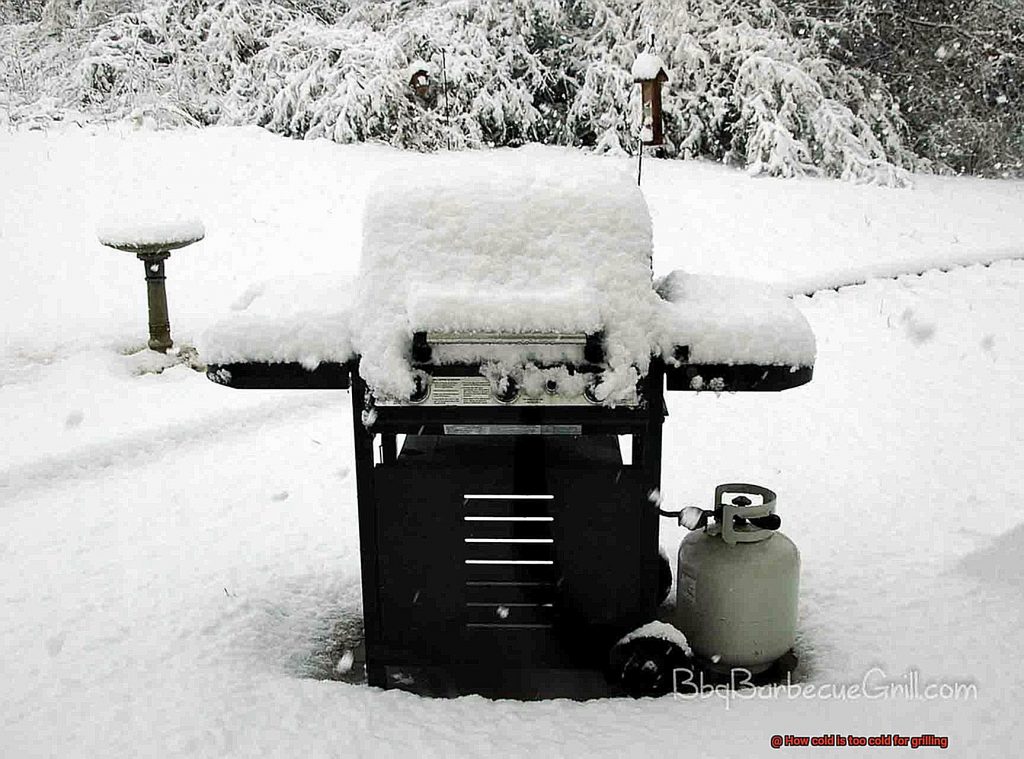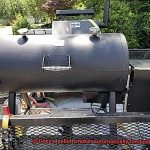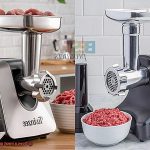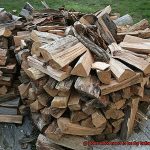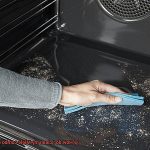The autumn season is in full swing, and with it comes cooler temperatures and colorful leaves. But what about grilling? Many people assume that grilling is strictly a warm weather activity, but the truth is, you can grill year-round with a few adjustments. The question is, how cold is too cold for grilling?
Factors like wind, humidity, and temperature can all impact your grill’s performance in colder weather. Understanding these variables will help you determine when it’s time to pack up your grill until next spring.
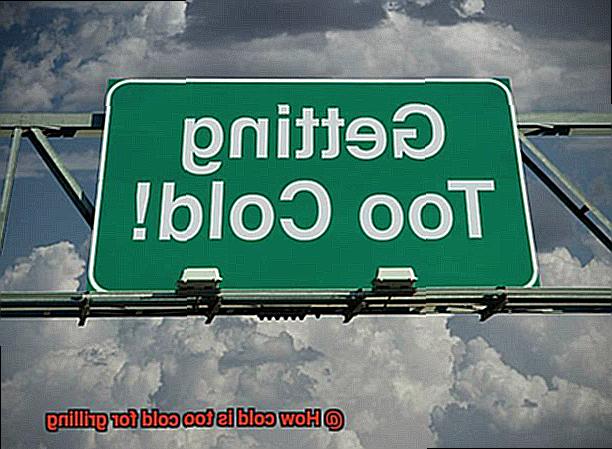
In this blog post, we’ll explore the ideal temperature range for outdoor grilling during chilly weather. We’ll also provide some tips on how to prepare your grill for colder temperatures and offer up some of our favorite recipes for staying warm while cooking outside.
Whether you’re a seasoned pitmaster or new to the game, you’ll find plenty of helpful information here to keep your grill hot and your meals delicious throughout the fall and winter months. So grab a cup of cider or cocoa and let’s fire up the grill.
Contents
What Type of Grill Should You Use?
Winter is the perfect time to enjoy grilled food with your loved ones. However, choosing the right grill for cold weather grilling can be a daunting task. The market is full of different grill types, each with its own strengths and weaknesses when it comes to cold weather cooking.
Gas Grills
Gas grills are a popular choice for many grillers due to their convenience and ease of use. They are also great for cold weather grilling, but it’s important to note that they may take longer to reach their desired temperature in colder temperatures. Furthermore, gas grills may require more fuel to maintain their heat in colder temperatures. If you’re planning on using a gas grill for winter grilling, make sure you have enough propane or natural gas on hand to keep your grill running smoothly.
Charcoal Grills
Charcoal grills are another popular option for outdoor cooking enthusiasts. While they can be used in colder weather, it may take longer for the charcoal to light and reach the desired temperature. Charcoal grills also tend to lose heat more quickly in colder temperatures, so it’s important to keep an eye on the temperature and add more charcoal as needed to maintain a consistent heat. If you’re using a charcoal grill in cold weather, consider using a charcoal chimney starter to get your coals burning faster.
Electric Grills
Electric grills are an excellent option for those who want to grill indoors or in areas where gas or charcoal grills are not allowed. They can be used in colder weather and are less affected by cold weather than gas or charcoal grills. However, like gas and charcoal grills, electric grills may take longer to reach their desired temperature in colder temperatures.
When choosing a grill for cold weather grilling, it’s crucial to consider your specific needs and preferences. Each type of grill has its unique strengths and weaknesses when it comes to cold weather cooking. To help you choose the right grill, here are some things to consider:
- Fuel efficiency: Some grills require more fuel to maintain their heat in colder temperatures.
- Temperature control: Ensure that the grill you choose has a reliable temperature control system, and it can maintain a consistent heat even in colder temperatures.
- Portability: If you plan on moving your grill around frequently, consider choosing a lightweight and portable option.
What Type of Fuel Should You Use?
Then it’s time to consider the most important aspect of grilling in cold weather – the type of fuel you use. As an expert in this area, I’ve researched and discovered some tips to help you make the best choice for your cold-weather grilling needs.
Firstly, let’s talk about charcoal and wood pellets. While both are excellent fuel choices for warmer weather, they may not be the most efficient options when it comes to colder temperatures. Charcoal can struggle to reach high temperatures, and wood pellets may not burn as efficiently in low temperatures. However, if you do decide to use charcoal or wood pellets, make sure to give yourself plenty of time to preheat your grill and monitor the temperature closely throughout the cooking process.
Next up is propane – often considered a more reliable option for grilling in colder weather. Propane grills are designed to reach and maintain higher temperatures than charcoal or pellet grills, making them ideal for cold-weather cooking. Additionally, propane tanks can be easily stored and transported, and it’s a good idea to have a backup tank on hand just in case.
But why stop at propane? There are other fuel options available too. Here are some other choices that you might want to consider:
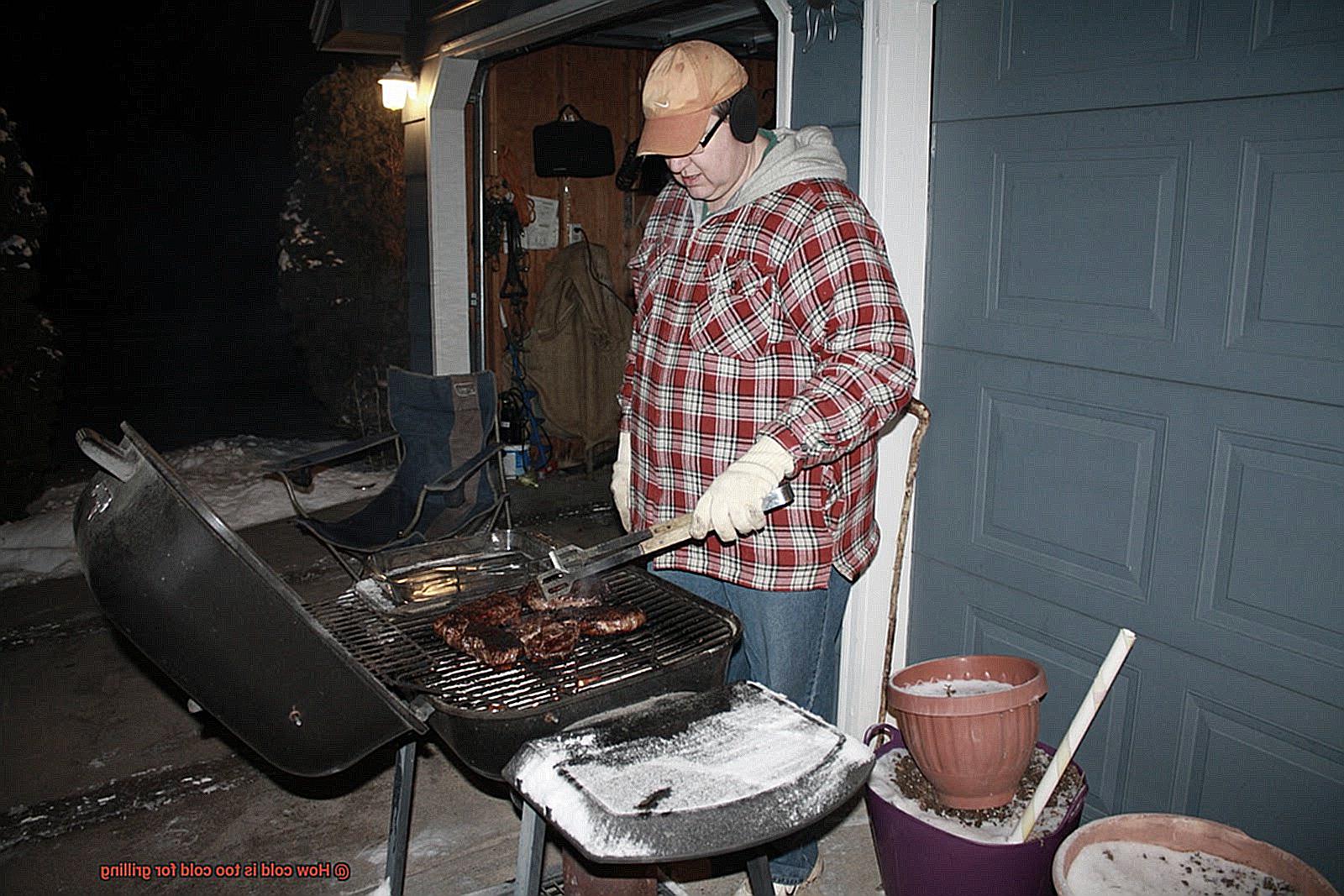
- Natural gas: This is similar to propane but can be more convenient if you already have a natural gas line installed in your home.
- Electric: If you have an electric grill, then this is an excellent option for colder weather as it doesn’t rely on combustion. However, they can be less powerful than gas or charcoal grills.
- Lump charcoal: This is different from regular charcoal as it’s made from hardwood and burns hotter and cleaner. It’s a great option for those who prefer the taste of food cooked over charcoal.
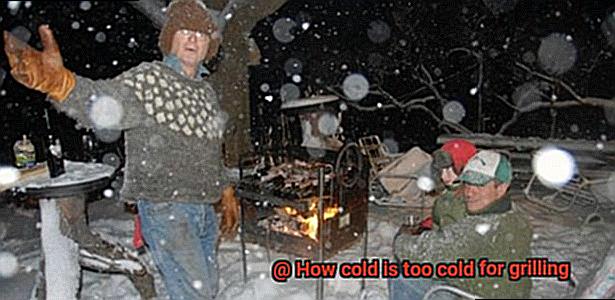
To sum it up, when it comes to grilling in colder weather, propane is usually the most reliable option. However, there are other fuel choices available, so make sure to choose what works best for you. Regardless of which fuel you choose, be sure to take extra precautions and monitor your grill closely throughout the cooking process.
How Cold Is Too Cold for Grilling?
We’ve compiled some important factors to consider before firing up your grill in colder temperatures.
Firstly, the type of grill you’re using can make a significant difference. Gas grills tend to perform better in colder temperatures than charcoal grills, thanks to their built-in ignition system that makes starting the fire easier. Charcoal grills, on the other hand, require more effort to get started, which can be challenging in colder weather.
Another factor to consider is wind chill. Windy conditions can make it difficult to maintain a consistent temperature on your grill, which can cause your food to take longer to cook or even cook unevenly. So be sure to check the weather forecast and avoid grilling on particularly windy days.
The type of food you plan on grilling is also crucial. Different foods require different temperatures to cook properly. If you’re planning on grilling steak or chicken, it’s essential to have high temperatures to ensure they cook thoroughly. However, if you’re cooking vegetables or fish, you won’t need as high of a temperature, making it easier to grill in colder weather.
Lastly, don’t forget about your personal comfort level. If it’s too cold outside for you to stand comfortably for an extended period of time, then it may not be worth it to grill. Ensure that you dress appropriately for the weather and take breaks if needed.
While there isn’t a set temperature that determines when it’s too cold to grill, as a general rule of thumb, if the temperature outside is below freezing (32°F/0°C), it may not be ideal for grilling unless you have a high-quality gas grill with a built-in ignition system and are prepared for the challenges that come with colder weather grilling.
Tips for Grilling in Cold Weather
Well, with these tips for grilling in cold weather, you can still enjoy those juicy steaks and perfectly grilled vegetables. Here are five sub-sections that will help you grill successfully in cold weather.
Planning Ahead
To ensure a successful grilling experience, plan ahead. Before you start cooking, make sure you have everything you need within reach. This includes your grilling tools, fuel, and ingredients. Checking the weather forecast is also important to ensure that you are prepared for any unexpected changes. Being prepared will help ensure that you can focus on cooking the perfect meal without any distractions.
Using the Right Fuel
Cold weather affects how quickly your grill heats up. That’s why it’s essential to use fuel that can withstand low temperatures. Propane gas and charcoal are both good options because they generate enough heat to cook your food properly. Make sure to have enough fuel on hand because cold temperatures can affect how quickly your grill heats up.
Keeping Your Grill Clean
A dirty grill affects the taste of your food and makes it harder to control the temperature. Before grilling, make sure to clean your grill thoroughly with a grill brush. This ensures optimal heat distribution and prevents your food from sticking to the grates.
Preheating Your Grill
Preheating is always important, but it’s especially crucial in cold weather. Allow your grill to preheat for at least 10-15 minutes before adding your food. This helps ensure that your food cooks evenly and prevents it from sticking to the grates.
Being Patient
Grilling in cold weather may take longer than usual, so be patient and give your food enough time to cook properly. Avoid opening the lid too frequently as this can cause heat loss and increase cooking time. Remember, patience is key when grilling in cold weather.
Adjusting Cooking Times
Cold weather can affect cooking times, so be prepared to adjust accordingly. You may need to increase cooking times or use a meat thermometer to ensure your food is cooked to the proper temperature. A meat thermometer is especially helpful as the cold temperatures can make it harder to judge when your food is done.
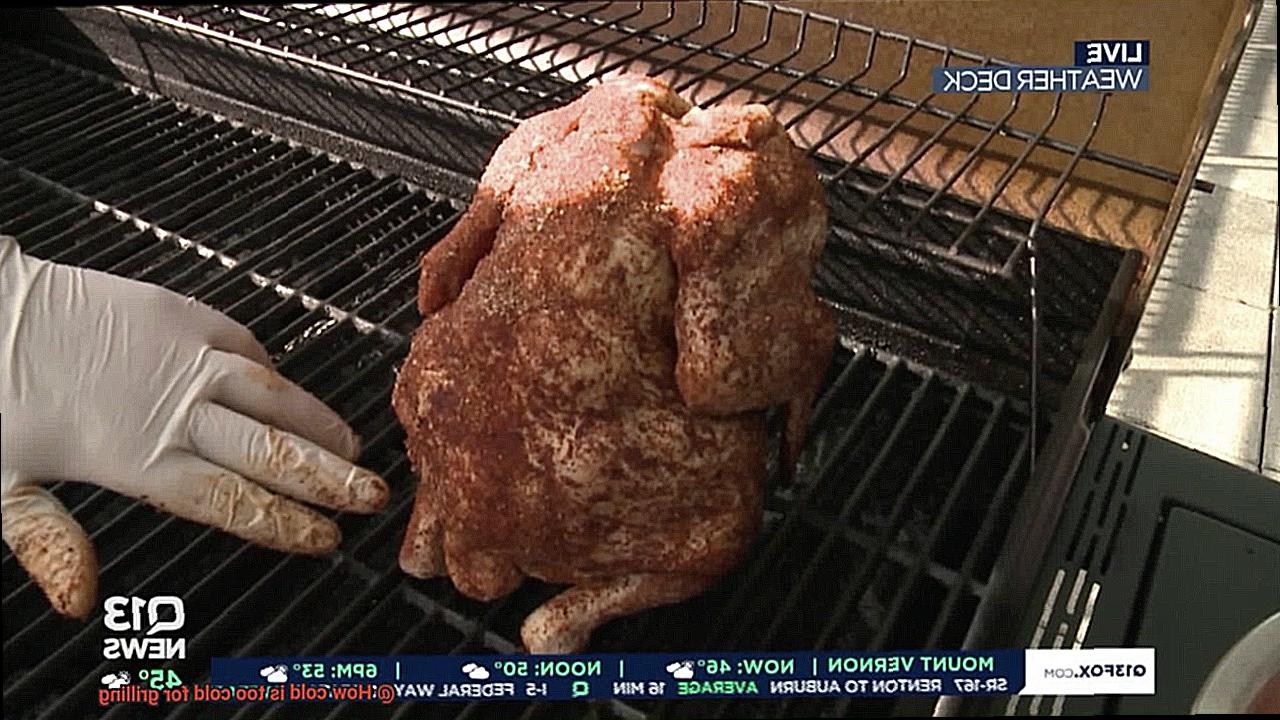
Don’t Forget About Safety
In addition to the usual grilling safety precautions, such as keeping a fire extinguisher nearby and never leaving your grill unattended, there are some additional safety considerations for grilling in cold weather. Make sure your propane tank is filled and stored properly, and never use your grill indoors or in an enclosed space. Being mindful of safety will ensure that you have a fun and safe grilling experience.
Monitoring the Temperature Carefully
Attention all grill masters. Whether it’s summer or winter, grilling is always in season. But when the temperature drops, there are a few extra steps you need to take to ensure perfectly grilled food. That’s where monitoring the temperature carefully comes in.
First off, a good quality meat thermometer is your best friend. When it’s cold outside, cooking times can be longer, which means you need to make sure your meat is cooked to a safe temperature. Plus, nothing ruins a meal like undercooked meat.
But it’s not just about the internal temperature of your meat. The temperature inside your grill can fluctuate rapidly in colder temperatures, leading to unevenly cooked food. To combat this, use an instant-read thermometer to monitor the grill’s temperature throughout the cooking process.
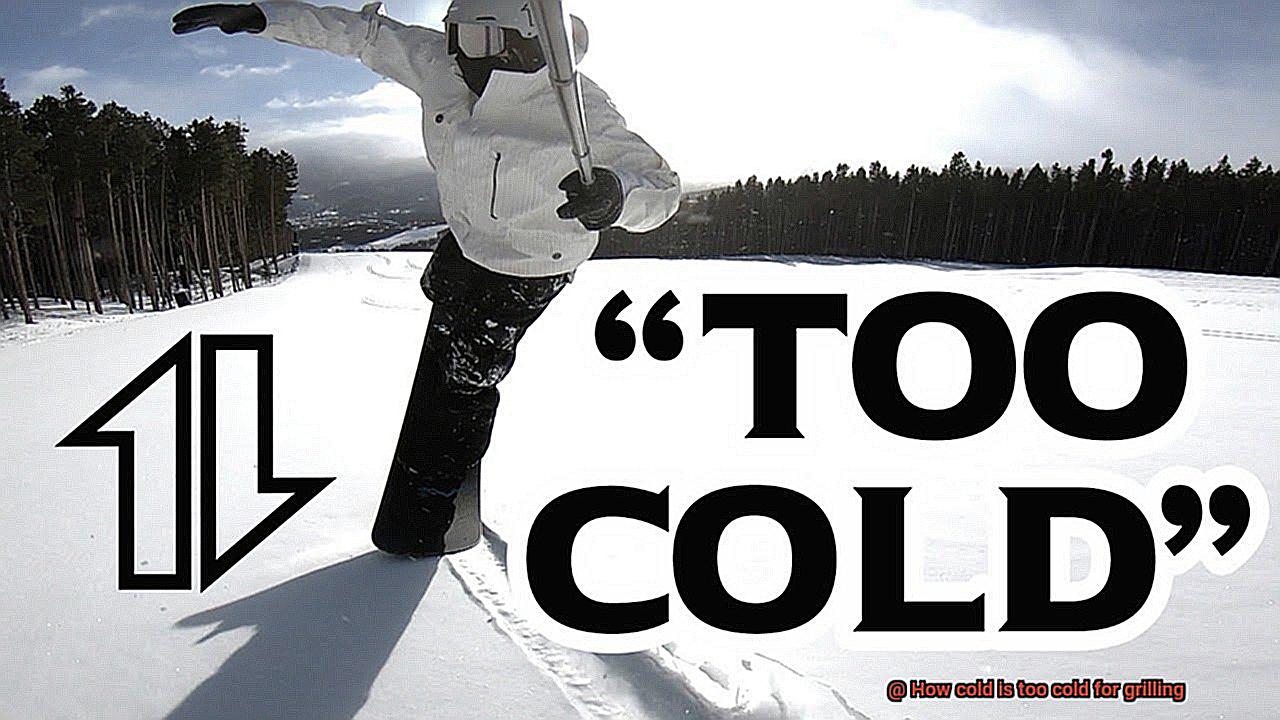
Pro tip: preheat your grill for at least 15-20 minutes before cooking to help maintain a consistent temperature inside the grill. And once you start cooking, keep that lid closed as much as possible to prevent heat loss.
Another trick up your sleeve? A grill cover. Not only will it protect your grill from harsh weather conditions, but it will also help insulate it from the cold temperatures, retaining heat and maintaining a consistent temperature.
In summary, here are the key takeaways for monitoring the temperature carefully while grilling in cold temperatures:
- Invest in a good quality meat thermometer and instant-read thermometer
- Preheat your grill for at least 15-20 minutes before cooking
- Keep the lid closed as much as possible during cooking
- Consider using a grill cover to help insulate your grill from the cold temperatures
Using a Meat Thermometer
Calling all grill masters. Ready to take on the challenge of grilling in cold weather? Then you definitely need to have a good quality meat thermometer by your side. Trust me, it’s the key to perfectly grilled food all year round.
Using a meat thermometer is crucial when it comes to determining the internal temperature of your meat. It’s not just a matter of preference or taste, but also a matter of food safety. This is especially important when grilling in cold weather because the temperature outside can affect the cooking time and internal temperature of your meat. So, let’s dive into why using a meat thermometer is so important.
First things first, make sure you insert the thermometer into the thickest part of your meat, away from any bones or fat. This will give you the most accurate reading of the internal temperature. It’s also important to clean your thermometer between uses to prevent cross-contamination.
When grilling in cold weather, it’s recommended to use a leave-in thermometer that can be placed in the meat before cooking and remain in place throughout the cooking process. This will allow you to monitor the internal temperature without having to constantly open the grill and let out heat. Plus, it’ll take some of the guesswork out of grilling.
Different types of meat have different recommended internal temperatures for safe consumption. It’s essential to know these temperatures so you can ensure that your meat is cooked safely and deliciously. Here are some guidelines:
<
- Chicken should be cooked to an internal temperature of 165°F.
- Beef can be cooked to a lower internal temperature depending on the desired level of doneness.
- Pork should be cooked to an internal temperature of 145°F.
- Fish should be cooked until it reaches an internal temperature of 145°F.
Now, let’s talk about why using a meat thermometer is particularly important when grilling in cold weather. When it’s chilly outside, it takes longer for your grill to heat up and maintain its temperature. This means that your meat may take longer to cook than it would during warmer weather. By using a meat thermometer, you can ensure that your meat is fully cooked to its appropriate internal temperature, regardless of how long it takes to get there.
Food Considerations When Grilling in Cold Weather
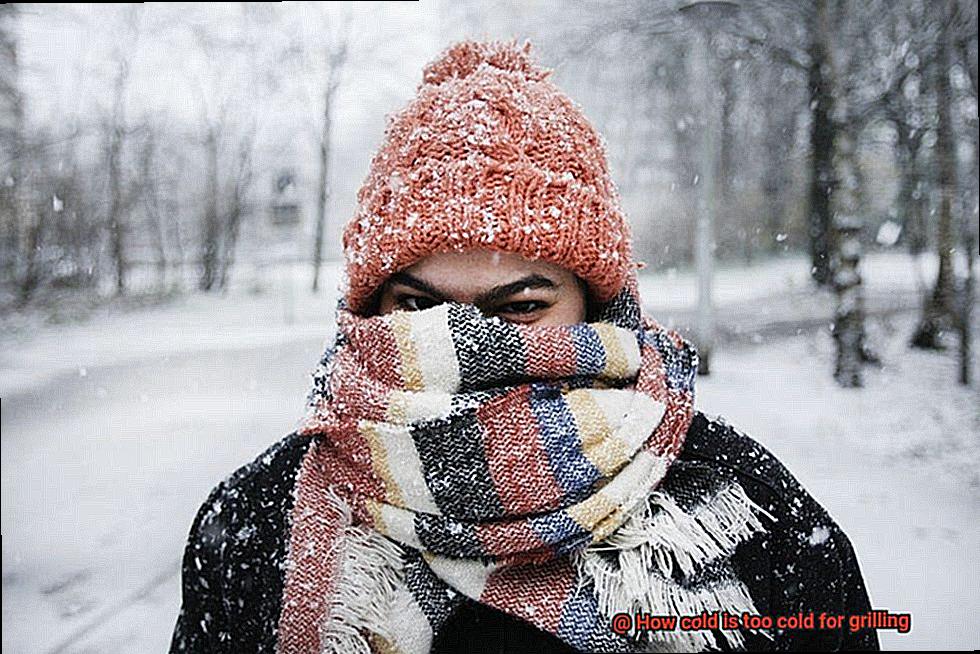
As the temperature starts to drop, it may be tempting to pack away your grill and hibernate inside until spring. However, with the right food considerations in mind, you can still enjoy delicious grilled meals in cold weather.
Firstly, keep in mind that colder temperatures can affect cooking times. This means you may need to adjust the heat on your grill or cooking time to ensure your food is cooked safely and thoroughly. Don’t take any chances with your meat; always use a reliable meat thermometer to ensure that it has reached a safe internal temperature before serving.
Another consideration when grilling in cold weather is the type of food you’re cooking. Foods that are more delicate or have a higher moisture content, such as fish or vegetables, may require some extra attention. Using a grilling basket or foil packets can help prevent these foods from sticking to the grill or falling apart during cooking.
In addition, consider preheating your grill for longer than usual to ensure that it’s hot enough before adding your food. This will help prevent your food from sticking to the grill and will make it easier to flip.
Lastly, keep your cooked food warm until you’re ready to serve. In cold weather, food cools down quickly once it’s removed from the grill. To avoid this, use a warming tray or place your cooked food in an oven set to a low temperature until you’re ready to serve.
Safety Precautions to Take When Grilling in Cold Weather
Grilling in cold weather can be an exciting and delicious experience, but it can also be dangerous if proper safety precautions are not taken. As a grilling expert, I have gathered some helpful tips to ensure that you and your loved ones stay safe while enjoying your favorite outdoor activity.
Firstly, keeping your grill clean is crucial to prevent grease fires. Before and after each use, scrape off any excess grease or food particles from your grill. This simple step can go a long way in ensuring a safe grilling experience.
In colder months, it can be challenging to maintain a consistent temperature on your grill. To prevent any accidents, be sure to check the temperature of your grill regularly. This way, you can avoid overcooking or undercooking your food.
Covering your grill with a grill cover is also a smart move. Not only does it protect your grill from the elements, but it also helps prevent moisture from accumulating inside. This reduces the risk of rust and corrosion, making your grill last longer and remain safe to use.
When grilling in low-light conditions, proper lighting is essential to avoid accidents. A headlamp or flashlight can provide enough illumination to keep you safe while grilling.
Lastly, dressing appropriately for the weather conditions is crucial when grilling in cold weather. Wear warm clothing and avoid loose-fitting clothes that could catch fire. This will help keep you comfortable and safe while grilling.
LGLk6tqoZrg” >
Also Read: What Should a Gas Grill Flame Look Like?
Conclusion
Don’t let the cold weather stop you from grilling up a storm. With a few adjustments and considerations, you can enjoy your favorite grilled meals year-round. But before you fire up your grill in chilly temperatures, it’s important to keep in mind some crucial factors.
The type of grill and fuel you use can impact your grilling experience in colder weather. While gas grills are convenient, they may take longer to reach their desired temperature when it’s cold outside. Charcoal grills tend to lose heat more quickly, so you may need to add more charcoal or adjust your cooking times accordingly. Propane gas is usually the most reliable option for grilling in colder weather.
Temperature monitoring is essential when grilling in cold temperatures. A meat thermometer is a must-have tool for determining the internal temperature of your meat accurately. Different types of meat have different recommended internal temperatures for safe consumption, so make sure to check them beforehand.
When grilling in cold weather, food considerations are crucial too. Adjusting cooking times and choosing foods that are less delicate or have higher moisture content can help ensure success on the grill. And don’t forget about safety precautions. Keeping your grill clean, checking the temperature regularly, using proper lighting, and dressing appropriately for the weather conditions will all contribute to a safe and enjoyable grilling experience.
With these tips and considerations in mind, there’s no reason why you can’t continue enjoying delicious grilled meals throughout fall and winter months.

